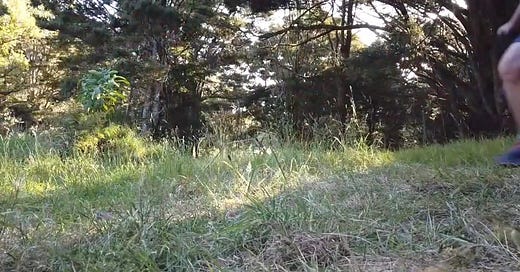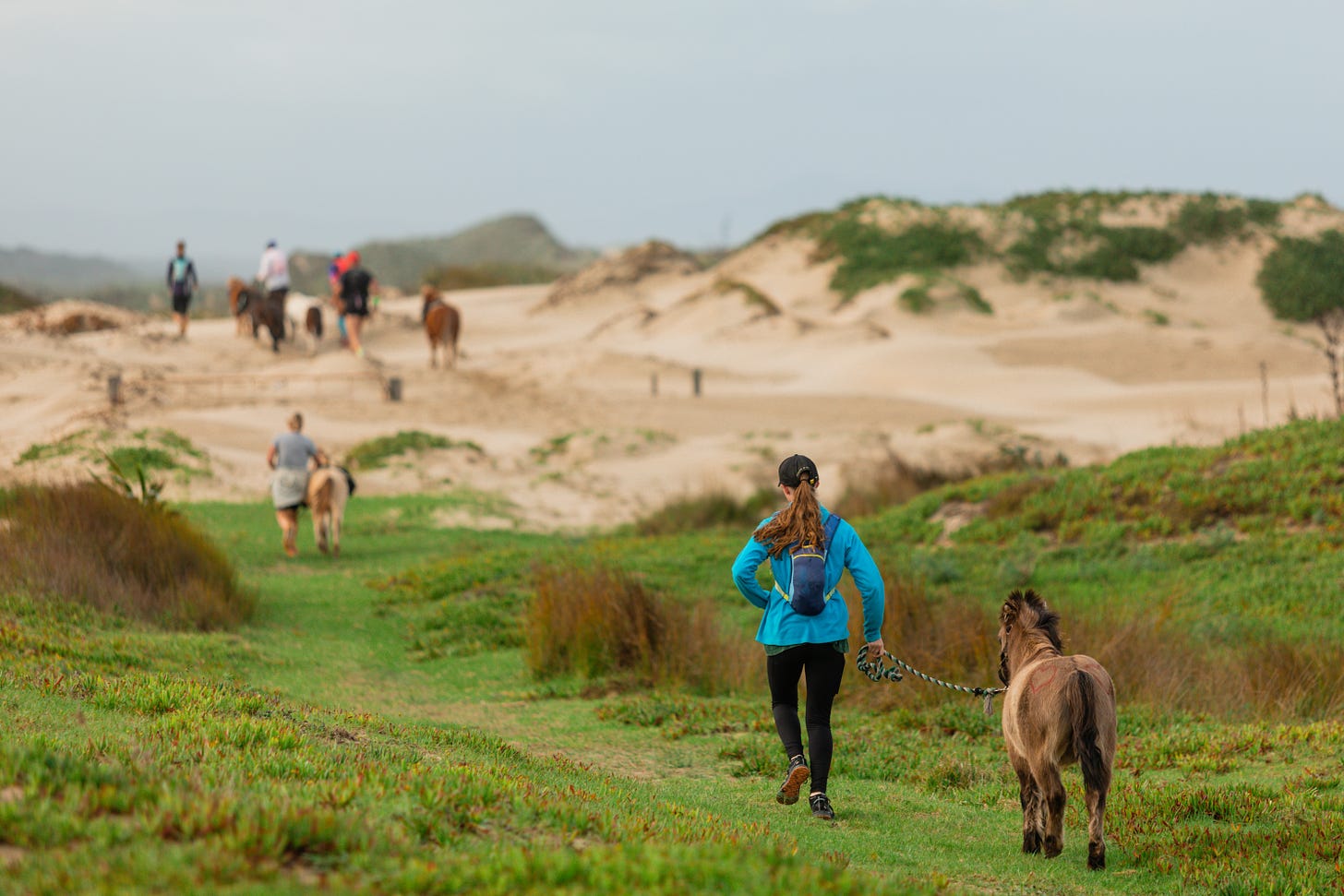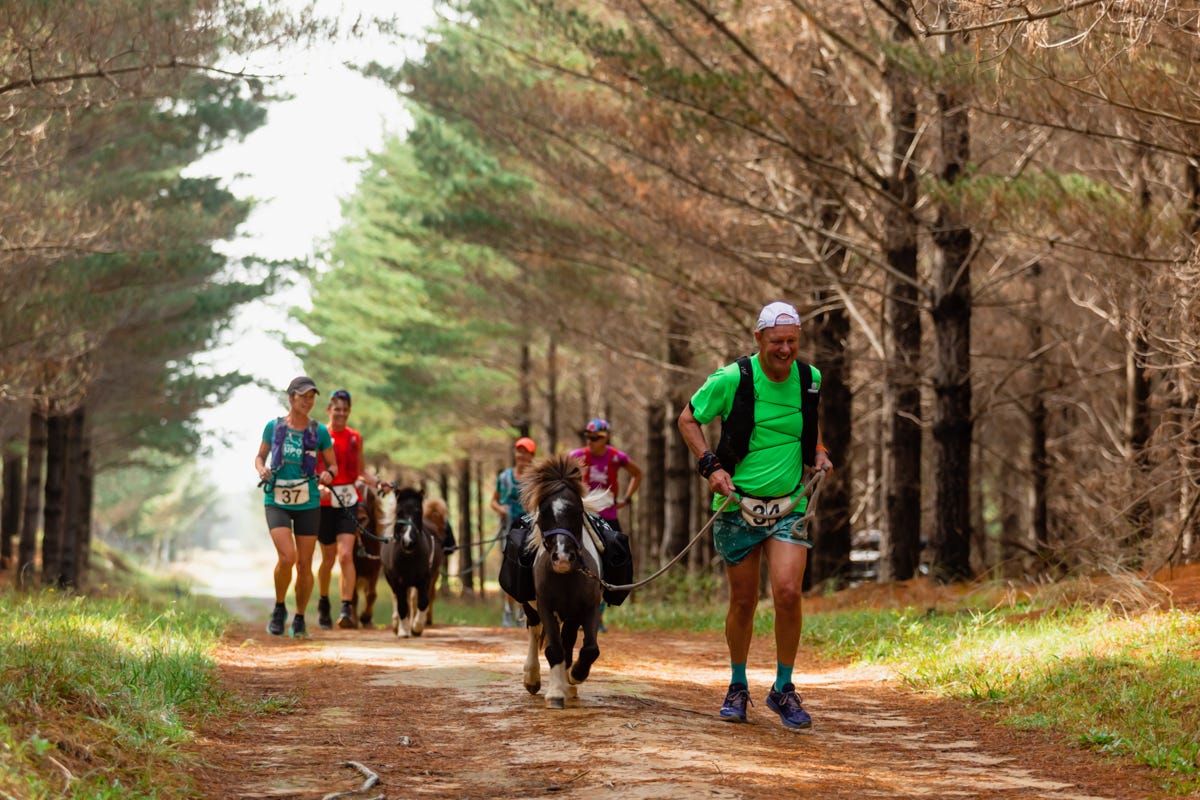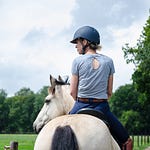The Mission Behind Born to Run Adventure Racing
Chloe Phillips-Harris and Debbie Sutcliffe run Born to Run Adventure Racing, a charitable trust with an unusual mission: creating thrilling adventure races while advocating for the welfare of miniature horses. Their organization manages a herd of 40 miniature horses who traverse hundreds of kilometres across stunning New Zealand landscapes alongside athletes, runners, and families.
What makes their work particularly special is that many members of their race team were once rescues, transformed from neglected, unhealthy animals into fit, happy adventure companions.
"I love seeing horses do what they're meant to do. And I love seeing horses perform at a high level," explains Chloe, whose background as a four-star eventer and Mongol Derby competitor gave her insight into just how athletic horses can be.
From Problem Horses to Racing Athletes
The story of how Born to Run began reveals a common problem facing miniature horses. As Chloe describes it, "One of the things that people always used to try and do was give me miniature horses, especially miniature stallions. There were all these people who had picked up a cute miniature pony, and then it had turned into a demon. And then they'd try to offload it on me."
This scenario plays out repeatedly across the world. People acquire miniature horses without understanding their needs, proper handling, or management. When these horses develop behavioral issues or health problems, they're passed along or neglected.
The most common issues the Born to Run team encounters include:
Severe laminitis and obesity: Many miniatures arrive with feet so overgrown and painful they can barely walk
Behavioral problems: Particularly with stallions that haven't been properly handled
Social isolation: Many have never lived in proper herds
Lack of purpose: These horses are often kept as lawn ornaments with no mental or physical stimulation
Rehabilitation: Physical and Mental
The rehabilitation process is intensive and individualized. For horses with laminitis, the team uses a gradual approach to trimming, soft surfaces for painful feet, and most importantly, movement.
"If they come with bad feet, we slowly adjust the trims. We don't go in there and do a really hardcore trim straight away," Chloe explains. "We just slowly start changing it."
For behavioral issues, especially with aggressive stallions, the process requires enormous patience. One example is Opie, a stallion who had been tied to a tree for years before rescue. When he arrived, he was so aggressive he would attack anything, even a statue.
"No exaggeration, it would have been hundreds of hours," Chloe says of Opie's rehabilitation. "I think of all the training I've put into horses, and Opie has probably had more training and more time put into him to rehabilitate him than any other horse I've ever worked with, miniature or full size."
The team focuses on helping horses find calm, first around humans and then around other horses. All rescued stallions are gelded once they're stable enough for the procedure, addressing the surplus of miniature horses.
Discovering Athletic Potential
Perhaps most surprising to newcomers is just how athletic these small horses can be. During the team's 100-kilometer races, the miniatures consistently impress with their stamina and heart rate recoveries.
"We had one stallion that was incredibly, incredibly horse-aggressive when he came," shares Debbie. "The hours that we all put into him to just get him to the point where he could be safe enough to be handled, to be gathered, and then work through all his horse aggression issues and his behavior issues to the point where he even could be handled by other people, and then as well as getting fit and then get to the race... there's been some really incredible turnarounds."
One of their less athletically-built miniatures, described as waddling "like a duck," completed 88 kilometers in 24 hours with a heart rate never exceeding 56 beats per minute - remarkably low for such exertion.
The Track System: A Key to Health
A critical element in both rehabilitation and training is movement. Debbie has created an innovative track system on her property where the miniatures must travel significant distances between hay, water, and shelter.
"I have 19 of them that live on the race. There's lots of different lanes where they have to come backwards and forwards," she explains. "They get to go out in the big paddocks because they are doing lots of training at the moment. But they do basically have their water and their hay at different places, so they have to walk."
This constant movement, combined with interval training to elevate heart rates, helps keep the miniatures fit and healthy without needing to severely restrict grazing - a common challenge for miniature horse owners.
Preparing for Adventure
The Born to Run team organizes multiple events throughout the year, including their signature 100-kilometer race held over Easter. During these events, participants are paired with miniature horses, often having no prior equine experience.
"When we do our 100K race, we have a training session the evening before," Chloe explains. "We give them basically a crash course: run beside the pony, don't wrap the rope around your hands, give it a click to make it go, and pull on the rope to make it stop."
Despite this minimal instruction, the miniatures excel at taking care of their human partners. The team carefully matches horses with participants based on fitness levels and experience, pairing their most competitive miniatures with serious runners and their steadier horses with walkers.
What's remarkable is how the horses' enthusiasm inspires their human companions to push further than they expected. "How many people say, 'Oh, I can't do 100K, but I'll sign up and maybe I'll just do the first day or two.' But they get so carried away because the pony's having fun, and they're having fun, and they're having this great adventure with this cute animal - and they do the whole hundred."
Changing Perceptions
Perhaps the most important aspect of Born to Run's work is changing perceptions about miniature horses.
"There is a reputation that I hear all the time - people call Shetlands 'shitlands,'" notes Chloe. "And that reputation of them being bitey, kicky, reary, naughty, antisocial creatures becomes normalized. Everyone thinks, 'Oh, that's what they're like.'"
The Born to Run team proves this stereotype wrong every day. Their 40+ miniatures - most former "problem horses" - are now well-behaved, enthusiastic athletes that safely interact with complete strangers during races.
"I think normalizing good behavior," Chloe says when asked how to change miniature horses' reputation. "We have 35, we might have more than 35 horses in our care at the moment. Most of those have come as naughty stallions, and they are all beautifully behaved, calm, lovely horses to be around."
Beyond New Zealand
While Born to Run is based in New Zealand, they've expanded their reach through virtual events that allow miniature horse owners worldwide to participate. These events, typically run during spring and autumn, encourage owners to get out and explore with their miniatures, sharing photos and experiences with a global community.
"We do virtual events all around the world. We have lots of people from the UK join us, and from Sweden and the States," Debbie explains. "Each year we run a couple of months of the year, normally around the autumn and springtime, around the laminitic time."
The Magic of Miniatures
When asked what makes miniature horses so special, both women light up with enthusiasm.
"They're like everything amazing about horses, but in a pocket-sized package," Chloe explains. "They've got such courage and such heart and such determination and just such funny personalities. I just wish people could see how much courage they have as well. They're just unstoppable little machines."
Debbie, who never expected to become a "miniature horse person," finds their loyalty most endearing. "They just become such faithful little friends... They just are amazing little companions. They really do become like the dogs - they just become such faithful little friends."
A Model for Miniature Welfare
Born to Run Adventure Racing offers a compelling model for miniature horse welfare globally. By giving these small equines purpose, proper care, and the chance to use their natural athleticism, they've transformed not just the lives of the horses in their care, but the perception of what miniature horses can achieve.
Their approach tackles the root causes of miniature horse welfare issues: lack of purpose, improper management, and misunderstanding of their physical and behavioral needs. And they do it while creating joyful experiences that connect people with horses in a wholly unique way.
As Chloe puts it, "I think they give people a connection with horses that they'd never have otherwise, which I think is really, really special."
For more information about Born to Run Adventure Racing or to join their virtual events, visit their website at borntorunadventureracing.org or follow them on Instagram and Facebook at Born to Run Adventure Racing.
Listen to this episode with a 7-day free trial
Subscribe to Curious Equestrian to listen to this post and get 7 days of free access to the full post archives.














